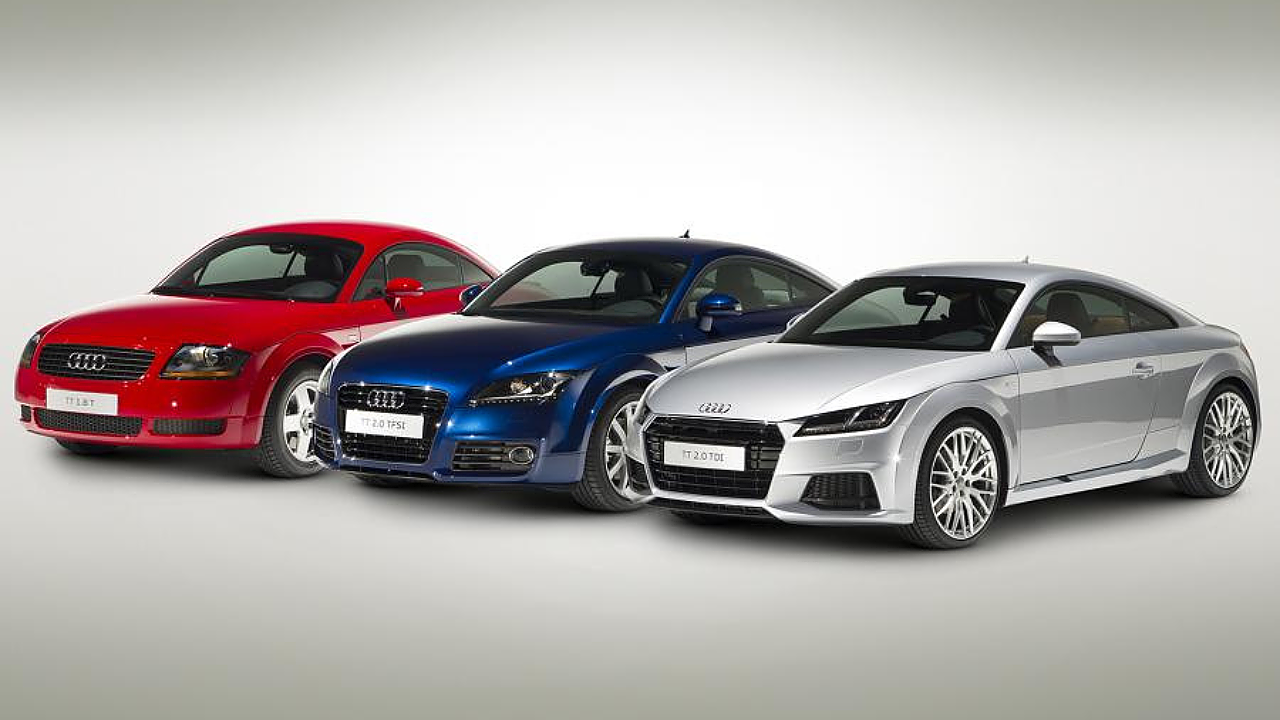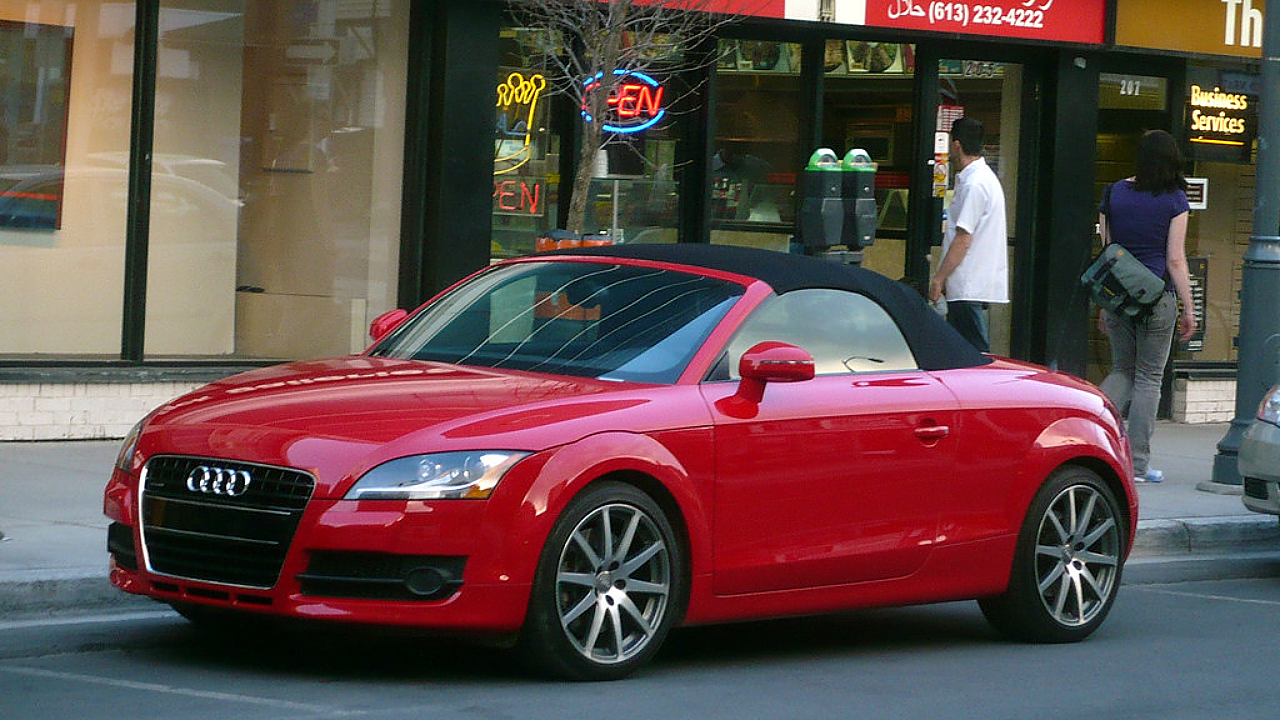
Since its inception, the VW group has been synonymous with creating some of the most iconic names in the automobile industry. The list started with the original VW Beetle, which was and is an inspiration to many modern-day cars, including the Porsche 911. While the group has shown the world the absolute limits of engineering marvels with the Bugatti Veyron.
Another nameplate that is iconic in its own sense is the Audi TT. Introduced in 1998, the iconic coupe from the stables of Audi has turned 25 this year. However, the routes of the sports car can be traced back to the 1990s.
In the mid-1990s, the Audi A8 luxury model elevated the Audi brand to a higher position and gradually led to the renaming of the model series: The Audi 80 became the A4, and the Audi 100 was dubbed the A6. Introduced in 1994, the A4 was the first model to embody its new design language. Next was the A3 premium compact car, launched in 1996, and the second generation of the A6, introduced in 1997.
In the course of emotionalising the brand through a fresh, progressive design, American designer Freeman Thomas, under the then Head of Design Peter Schreyer, created a sports car in the Audi TT Coupé. The company presented the study to an enthusiastic trade show audience at the IAA in Frankfurt in September 1995. Three months later, the decision was made to mass-produce the TT Coupé.
Interestingly, the model name 'TT' is reminiscent of the legendary Tourist Trophy on the Isle of Man, one of the oldest motorsports events in the world and one where NSU and DKW celebrated great success with their motorcycles. The name 'TT' also recalls the sporty NSU TT of the 1960s. The TT Coupé’s deliberate departure from the usual nomenclature of the company underscored the complete novelty of the model.
Torsten Wenzel, Exterior Designer, Audi, who helped introduce the study to series production, said, “To us, the greatest praise was when the trade press noted appreciatively that not much had changed from the study to series model, although we did, of course, have to adapt many details due to the technical specifications for the series version, including the proportions.”
The integration of a rear side window was most noticeable, which elongated the car’s profile and increased the sports car’s dynamics. For Wenzel, the Audi TT remains “a driving sculpture, with highest-quality surfaces and lines.” The body of the Audi TT appears to be made from one piece, he says, and the front end, without traditional bumper overhangs, emphasises its clear form.
Another design element contributes to the unmistakable silhouette of the TT Coupé: the circle – “the perfect graphic shape,” as Wenzel describes it. Numerous circular elements inspired the sports car’s exterior and interior design. Inspired by Bauhaus, every line in the TT has a purpose, shape, and function. “At Audi Design, we always follow the philosophy of ‘less is more’. Bringing out the TT Coupé’s unique character by reducing it to the essentials was a challenging and special undertaking for us designers.”
Getting Into Series Production
In 1998, series production of the TT Coupé began. A year later, the carmaker launched the TT Roadster. Like the show car and the A3 launched in 1996, the sports car was based on the transverse engine platform of the VW Golf IV.
From the beginning, the TT was produced by Audi Hungaria Motor Kft. in Hungary. The painted TT bodies were transported overnight by rail from Ingolstadt to Győr, where the final assembly took place. This method of cross-site production between Ingolstadt and Győr was unique in the automotive industry at the time.
Interestingly, Audi Hungaria, a wholly-owned subsidiary of Audi AG, is also celebrating its 30th anniversary in 2023. Founded in February 1993, originally as an engine manufacturing plant only, the facility took over the assembly of the TT in 1998 in cooperation with the Ingolstadt plant. In 2013, the company evolved into a full-fledged automotive plant. Since its foundation, Audi Hungaria has built more than 43 million engines and nearly two million vehicles.
The first-generation TT came with four-cylinder turbo engines with a power spectrum from 150 to 225 PS and a V6 unit with 250 PS. A highlight of the engine range was the four-cylinder in the TT Quattro Sport which was boosted to 240 PS, and 1,168 units were delivered.
First-generation TT customers had plenty of choices when selecting special equipment. In addition to exclusive colours such as Papaya Orange or Nogaro Blue, customers could equip the TT with factory-fitted special accessories. For example, the 'baseball glove' design for the leather seats in the TT Roadster, originally an eye-catcher in the show car, transitioned to series production.
Over eight production years, 178,765 first-generation TT Coupés (Type 8N) rolled off the production line by mid-2006. While 90,733 TT Roadsters were built between 1999 and 2006.
Improving Upon The First Gen
The second-generation TT launched in 2006 (Coupé) and 2007 (Roadster) and was based on the platform of the second-generation A3. The designers of the second generation held reduction to the essentials as the dominant design principle, as evidenced by the exterior's minimalist design and the sleek, driver-oriented interior. The round shape and circular motif remained signatures of the TT portfolio, serving as unifying elements in exterior and interior design. The notable elements include the aluminium fuel tank cap, round air vents, gearshift edging, and a distinctive gear knob.

Dynamically, adaptive dampers with Audi magnetic ride were used for the first time in the TT with the second generation. Available as an option, this technology continuously adapts the shock absorbers to the profile of the road and the driver’s individual style.
In 2008, the TTS sports model was launched with a 2L turbo engine and 272 PS, followed a year later by the TT RS with a 2.5L five-cylinder turbo engine with 340 PS and 360 PS in the TT RS plus. In 2008, the brand also launched the TT 2.0 TDI Quattro – the world’s first production sports car to run on a diesel engine.
Striving For Perfection
The third generation of the TT was launched in 2014, wherein the company used this model to reduce its weight. The TT Coupé, with a 2.0 TFSI engine and manual transmission, weighed only 1,230 kg, up to 50 kg lighter than before.
For the new TT and TT RS, the designers reinterpreted the unmistakable lines of the original TT from 1998 for the modern age. They enriched them with numerous dynamic facets, while the round fuel tank cap with typical TT lettering remained true across the generations. Many profile details also deliberately recalled the first-generation design classic.
In technical terms, the third-generation TT offered several innovations. For example, this model marked the debut of the virtual cockpit, a fully digital instrument panel with highly detailed, versatile displays that replaced analogue instruments and the MMI monitor.
In 2016, a new era for automotive lighting technology began in the TT RS, when Audi used organic LEDs, known as OLED technology, for the first time.
The sports car’s engine range is also improved. The top model was initially the TTS with a 2L turbo engine and 310 PS, followed in 2016 by the TT RS with the 2.5L five-cylinder turbo engine. With its 400 PS, this engine boasted a sporty sound and, on top of that, was named “International Engine of the Year” nine times in a row.

Moving With The Time
Earlier this year, Audi confirmed that the company plans to pull the plug off the TT production, and 2023 will be the last year for the coupe. However, if reports are to be believed, the company plans to introduce the next generation of the nameplate in the electric form.
To celebrate the legend, the carmaker introduced the TT RS Coupé iconic edition. The model comes in Nardo grey and is limited to 100 units. With this, it aims to bring together the design and technology highlights from a quarter of a century of the TT to celebrate this anniversary year of 2023.
The final edition model receives a black-styling pack to help it stand out from the standard model. The kit comes with black badging, exhaust tips, and a spoiler. The TT Final Edition Roadster has black rollover hoops and a black wind diffuser.
The interior of this edition features a mix of Alcantara and leather upholstery, as well as red contrast stitching on the seats and steering wheel and red piping on the floor mats. It also includes the 'Technology Pack,' which adds satellite navigation and Audi Connected Infotainment Services. The vehicle comes standard with the comfort and sound pack, which includes features such as an upgraded sound system, reversing camera, and other parking aids.
Also Read
Audi Showcases RS Q e-tron E2 With Improvements Over Previous Model